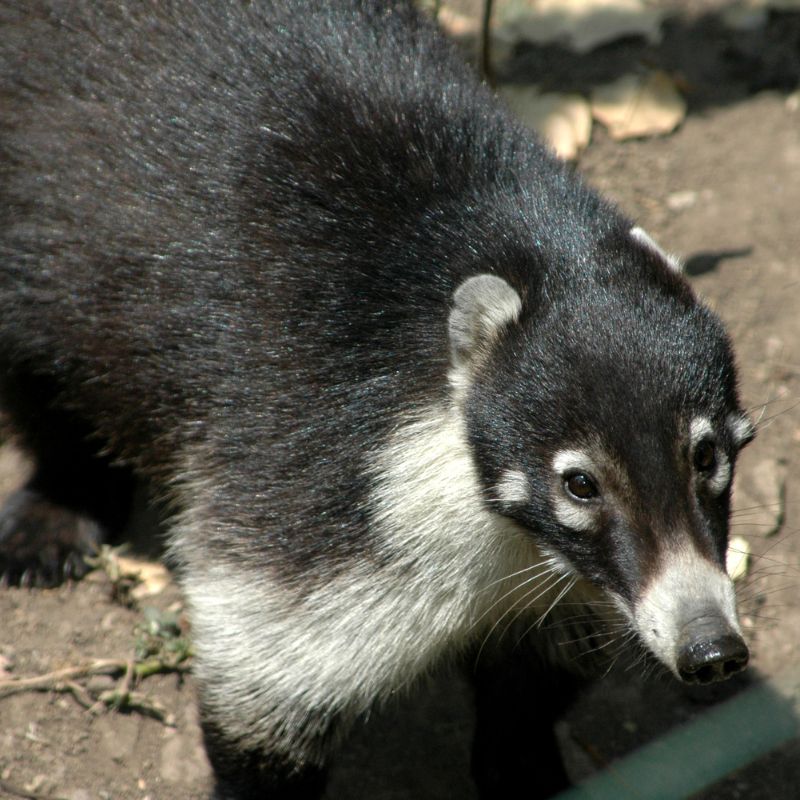What are the animals you can see in Manuel Antonio, other than monkeys? In the region as well as in the national Park you will find many other species of animals. Keep on reading and find out 5 species of animals you can see in Manuel Antonio.

Manuel Antonio National Park is one of the best spots in Costa Rica to experience the mixture of stunning beaches and abundant exotic species. This must-see destination is home to one of the most popular places to visit around the world, as it symbolizes both the gorgeous sandy Pacific coast and the verdant jungle teeming with unique species.
Wandering through into the rainforest or strolling along the beach, you could see rare whiptail lizards, brown basilisk lizards, fruit bats, as well as a variety of vibrant birds, such as toucans and scarlet macaws. Yet, if the shyer locals don’t show up, you won’t have to seek long for the following 5 Common Costa Rican Animals you can see in Manuel Antonio.
1- Sloths:
The most popular slow canopy resident in Costa Rica can be found on the trees of Manuel Antonio. Visitors include both three-toed and two-toed sloths, which are frequently observed clutching trees, scratching their buttocks, and traveling extremely slowly.

They are named perezosos, the Spanish term meaning slothful. You may not see them initially since they resemble lumps on the trees, yet if you’re fortunate, they may crawl over a limb or smile at you. These adorable typical Costa Rican animals spotted in Manuel Antonio are undoubtedly on everyone’s bucket list.

2- Iguanas:
The iguana, a popular mascot in many places around the world, in Costa Rica is among the most spectacular wildlife. These majestic lizards are frequently observed lounging in the sun and are hardly alarmed by human presence.

At Manuel Antonio, both the black spiny-tailed iguana as well as the green iguana are abundant. Despite being categorized as black and green, these creatures can be highly colorful, with magnificent scales as well as spiny backs, and are often 3 to 6 feet in length.
3- Crabs:
There are several varieties of crabs, such ghost crabs, red land crabs, mouthless crabs, as well as hermit crabs, among the frequent Costa Rican animals seen at Manuel Antonio. No matter if they are darting across the sand, hanging to the wave-battered rocks, or creeping through the forest floor, these small creatures are plentiful in the park and on the shore.

4- White Nosed Coatimundi:
The white-nosed coati (Nasua narica) is a common sight in Manuel Antonio National Park.
These small, agile mammals are easily recognizable by their long, bushy tails and distinctive white snouts. White-nosed coatis are omnivores and can often be seen foraging for food on the forest floor or in trees.

Visitors to the park should be careful not to feed or approach these animals, as they can become aggressive if they feel threatened.
Despite being a common sight in the park, the white-nosed coati is listed as a species of least concern by the IUCN.
5- Birds:
Manuel Antonio National Park is a birdwatcher’s paradise, boasting approximately 350 kinds of birds, as well as a great deal more visit the park on a regular basis.

The scarlet macaw (Ara macao) is one of the park’s most famous birds, with its vibrant red, yellow, and blue feathers. Other bird species that visitors can spot in the park include the green ibis (Mesembrinibis cayennensis), the orange-chinned parakeet (Brotogeris jugularis), and the black-hooded antshrike (Thamnophilus bridgesi).
The park’s coastal location also provides an opportunity to see seabirds such as the brown pelican (Pelecanus occidentalis), magnificent frigatebird (Fregata magnificens), and brown booby (Sula leucogaster). The park’s varied ecosystems, including rainforest, mangroves, and beaches, provide a haven for a wide variety of bird species.
To wrap it up:
When you visit Manuel Antonio National Park, you must anticipate seeing at least some of the park’s native animals. The amount is dependent on the time of day, the circumstances, and, of course, some luck. It is probable to observe a significant amount of wildlife by yourself, but hiring a knowledgeable guide will allow you to get even more out of your trip.